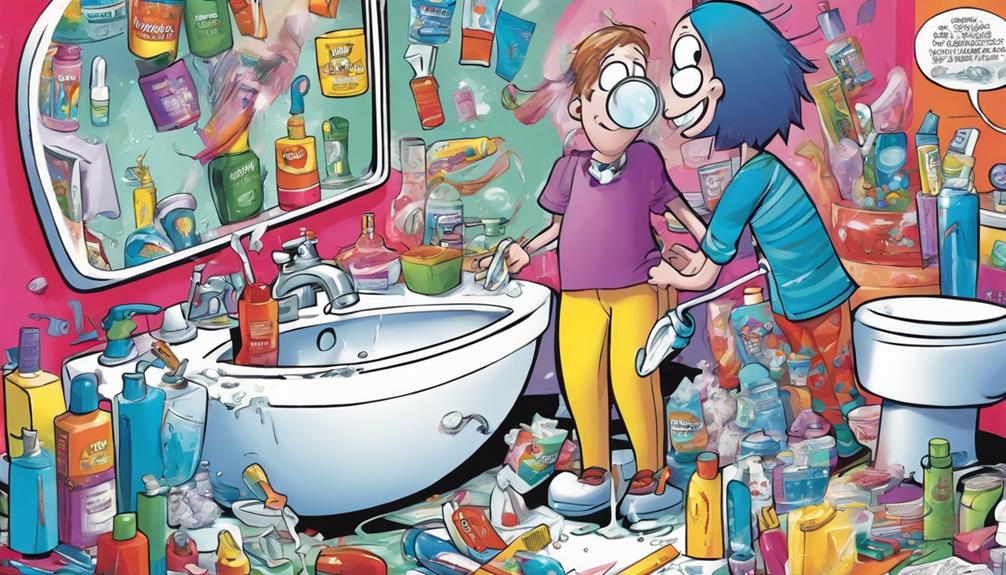When it comes to kids' toothpaste, it's not just about fun flavors. The right toothpaste is crucial for cavity prevention and healthy dental development. You should choose fluoride toothpaste for children aged six months and older, as it strengthens enamel and fights decay. If your child has sensitivity issues, look for SLS-free options to avoid discomfort. Don't forget to supervise brushing to guarantee the right amount is used. With various brands and formulations available, understanding which one suits your child's needs can seem overwhelming. There's more you might want to reflect on to guarantee ideal dental health for your little ones.
Key Takeaways
- Fluoride toothpaste is essential for kids from 6 months old to prevent cavities and strengthen enamel; supervision during brushing is crucial.
- Choose kid-friendly, fluoride-containing toothpaste, and consider SLS-free options for children with sensitivity issues.
- Prescription toothpaste with higher fluoride levels is available for high-risk children; consult a pediatric dentist for tailored recommendations.
- Evaluate marketing claims carefully; look for the ADA Seal of Acceptance to ensure toothpaste effectiveness and safety.
Importance of Fluoride for Kids

Fluoride plays an important role in protecting your child's teeth from cavities, making it an essential ingredient in their toothpaste starting as early as 6 months old. Using fluoride toothpaste helps strengthen tooth enamel, making it more resistant to decay. By incorporating this into your child's daily routine, you're actively preventing cavities and setting the stage for a healthy smile.
For children under 3 years old, a grain of rice-sized amount of fluoride toothpaste is recommended. This small quantity is sufficient to provide the protective benefits without the risk of excessive fluoride ingestion. It's important to understand that the benefits of fluoride in preventing cavities far outweigh any potential risks. The occurrence of dental fluorosis, which can manifest as white spots, typically requires significant fluoride exposure, far beyond normal usage.
Regular dental check-ups are essential, as pediatric dentists can provide personalized advice on fluoride exposure tailored to your child's needs. By prioritizing fluoride toothpaste and maintaining these check-ups, you're ensuring your child has the best defense against cavities, promoting long-term dental health.
Choosing the Right Toothpaste
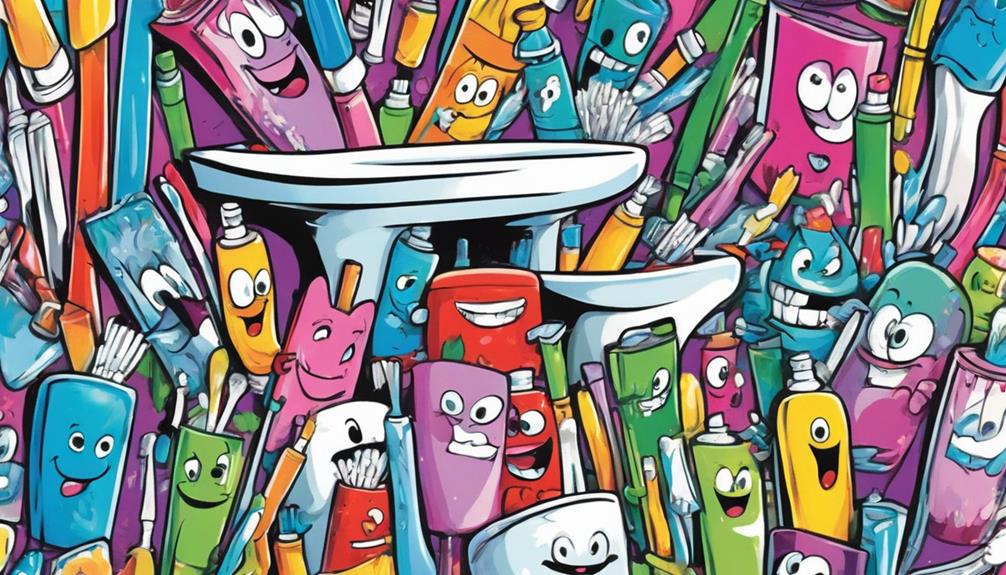
Selecting the right toothpaste for your child is key to ensuring they get the cavity-fighting benefits of fluoride while enjoying their brushing routine. The American Academy of Pediatric Dentistry recommends using fluoride toothpaste starting at 6 months of age for effective cavity prevention.
For children under 3 years, it's vital to use only a grain of rice-sized amount of fluoride toothpaste. This minimizes the risk of fluoride ingestion while still providing essential dental care.
Look for kid-friendly toothpaste options like Crest Sparkle Fun or Tom's of Maine Strawberry. These products come in appealing flavors that encourage your child to brush regularly. If your child has sensitivity issues, consider avoiding toothpaste with sodium lauryl sulfate (SLS), as it can cause discomfort due to its foaming properties.
For children at high risk of cavities, you might want to consult your dentist about prescription toothpaste like Just Right 5000, which offers a higher fluoride concentration and helps control dosage.
Choosing the right toothpaste not only supports your child's dental health but also makes brushing a more enjoyable experience. Choosing the right toothpaste can help address specific dental concerns, like sensitivity or enamel strengthening. With a wide variety of flavors and formulas available, finding the right toothpaste for your child’s preferences can also make the brushing routine more enjoyable. Ultimately, choosing the right toothpaste is an important step in creating healthy dental habits for your child that will last a lifetime.
Toothpaste for Sensitive Teeth
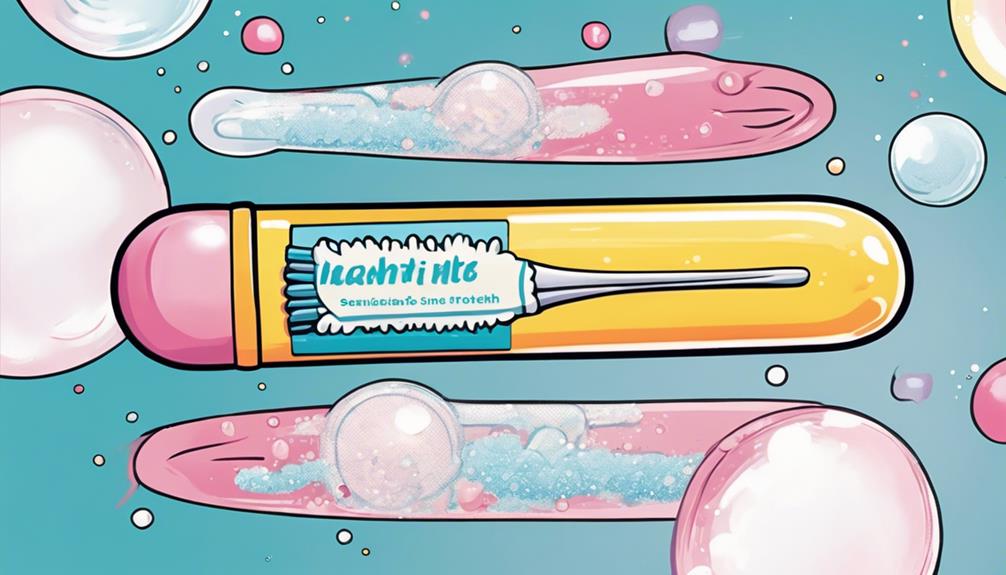
When your child experiences tooth sensitivity, choosing the right toothpaste can make a significant difference in their comfort during brushing.
Many standard toothpaste options contain Sodium Lauryl Sulfate (SLS), which can exacerbate sensitivity in young children. Instead, consider SLS-free alternatives like Hello Toothpaste and Dr. Bob's, as they prioritize your child's overall comfort.
Toothpaste formulated for sensitive teeth often includes potassium nitrate, which helps block dentin tubules, reducing discomfort from temperature changes or sweet foods. Brands like Tom's of Maine and Tanner's Tasty Paste offer various flavors and SLS-free formulations specifically designed for sensitive teeth, making brushing a more pleasant experience for your child.
If your child prefers something less sweet, unflavored toothpaste options are available, ensuring they can maintain dental hygiene without discomfort.
Regular dental check-ups are essential for children with sensitivity issues. A pediatric dentist can recommend tailored toothpaste and treatments based on your child's overall needs, helping you manage their sensitivity effectively.
Prescription Options for High Risk
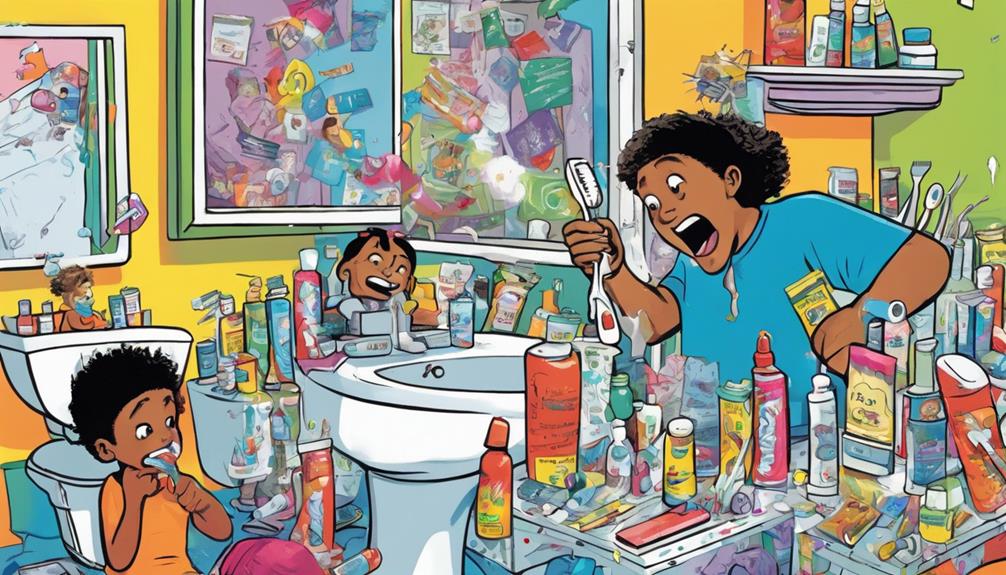
If your child is at high risk for cavities, prescription toothpaste like Just Right 5000 could be a game-changer. It offers higher fluoride levels and a dispensing system for controlled use.
However, you'll want to supervise their brushing to guarantee safety. Regular check-ups with a pediatric dentist will help you tailor fluoride treatments to meet your child's specific needs.
Identifying High-Risk Children
High-risk children, particularly those with a history of cavities or poor oral hygiene, often need specialized prescription toothpaste like Just Right 5000 to enhance their dental care. This fluoride toothpaste contains a higher concentration of fluoride (5,000 ppm) compared to standard options, making it an effective choice for preventing cavities. You should consider your child's risk factors, such as their dental history and brushing habits, when evaluating their need for prescription toothpaste.
It's vital to supervise brushing for children up to age 8 to guarantee proper fluoride application and minimize the risk of ingestion. Regular dental check-ups are also essential for high-risk children, as they help monitor oral health and allow dentists to adjust fluoride treatments based on individual needs. Tailored fluoride treatments can provide personalized care, addressing specific dental concerns effectively.
Using a dispensing system with prescription toothpaste like Just Right 5000 guarantees controlled fluoride amounts, preventing excess exposure while maximizing cavity prevention benefits. By understanding these factors, you can make informed decisions about your child's dental care and help set them on a path to a healthier smile.
Prescription Toothpaste Benefits
Prescription toothpaste, like Just Right 5000, offers significant benefits for children at increased risk of cavities by delivering a concentrated dose of fluoride. This toothpaste contains a higher fluoride concentration of 5,000 ppm, making it a powerful tool in your child's dental care arsenal.
Using a dispensing system, it helps control the amount of fluoride applied, guaranteeing safe and effective use. Regular dental check-ups are essential to monitor your child's dental health and adjust fluoride exposure as needed. Pediatric dentists can personalize fluoride treatments based on individual assessments, providing tailored care for your child's unique needs.
| Benefit | Description | Importance |
|---|---|---|
| Higher Fluoride Level | Contains 5,000 ppm of fluoride | Reduces cavity risk |
| Controlled Dispensing | Dispensing system prevents overuse | Guarantees safe application |
| Personalized Care | Tailored treatments from pediatric dentists | Addresses specific dental needs |
Supervised Brushing Practices
Supervised brushing practices are vital for kids under 8, as they help guarantee proper technique and minimize the risk of excessive fluoride ingestion. When you supervise your child's brushing, you can confirm they're using the right amount of fluoride toothpaste. For most children, a pea-sized amount is sufficient, but those at high risk for cavities may need a special prescription toothpaste.
One such option is Just Right 5000, which contains a higher fluoride concentration of 5,000 ppm. This toothpaste is designed with a dispensing system that helps control the exact amount of fluoride applied during brushing. It's essential to follow the pediatric dentist's recommendations when using prescription toothpaste, as they can tailor fluoride treatments based on your child's specific dental health needs.
Regular dental check-ups are also key. They allow you to monitor your child's dental health and adjust fluoride exposure as necessary. By practicing supervised brushing and utilizing the right toothpaste, you can greatly enhance your child's oral health while keeping fluoride levels safe.
Make sure you're proactive in these practices to set your child up for a lifetime of healthy smiles.
Alternatives to Fluoride
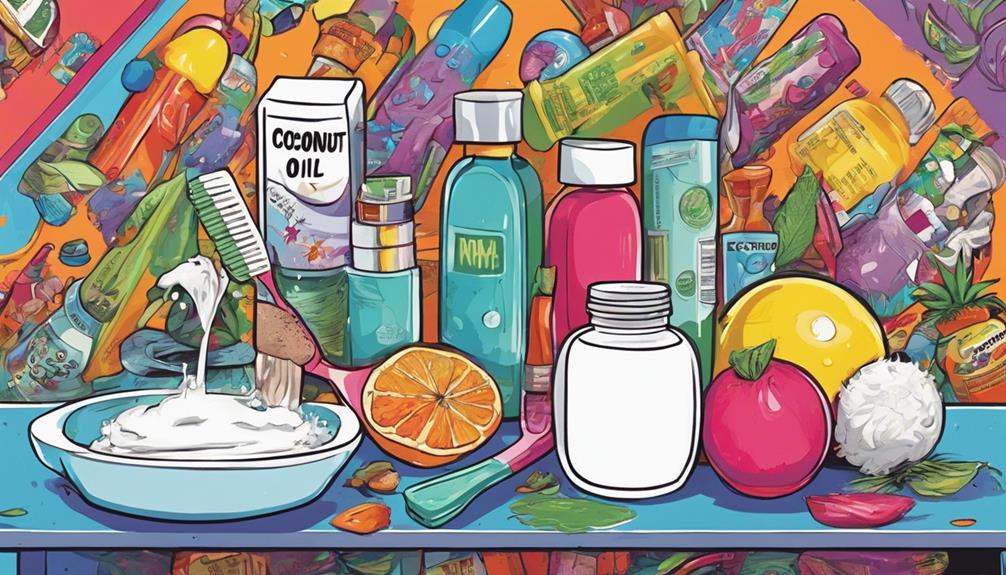
If you're looking for fluoride alternatives for your child's toothpaste, options like xylitol and hydroxyapatite are becoming more popular. While these alternatives can be appealing, it's essential to understand their limitations.
Hydroxyapatite has shown some promise in reducing sensitivity and providing minor cavity prevention, but xylitol mainly fights cavity-causing bacteria without remineralizing teeth like fluoride does.
Here are some alternatives you might consider:
- Xylitol: Helps combat cavity-causing bacteria but lacks thorough cavity prevention.
- Hydroxyapatite: Offers potential sensitivity reduction and minor cavity benefits.
- Fluoride-free brands: Options like RiseWell and Theodent are available, though they face criticism for their marketing tactics.
- Lower concentrations: Over-the-counter alternatives may have less effective concentrations than prescription options.
While these alternatives may work for some young children, they mightn't provide the same level of cavity protection as fluoride.
Effective oral hygiene practices should always accompany any toothpaste choice to safeguard your child's dental health.
Understanding Marketing Claims
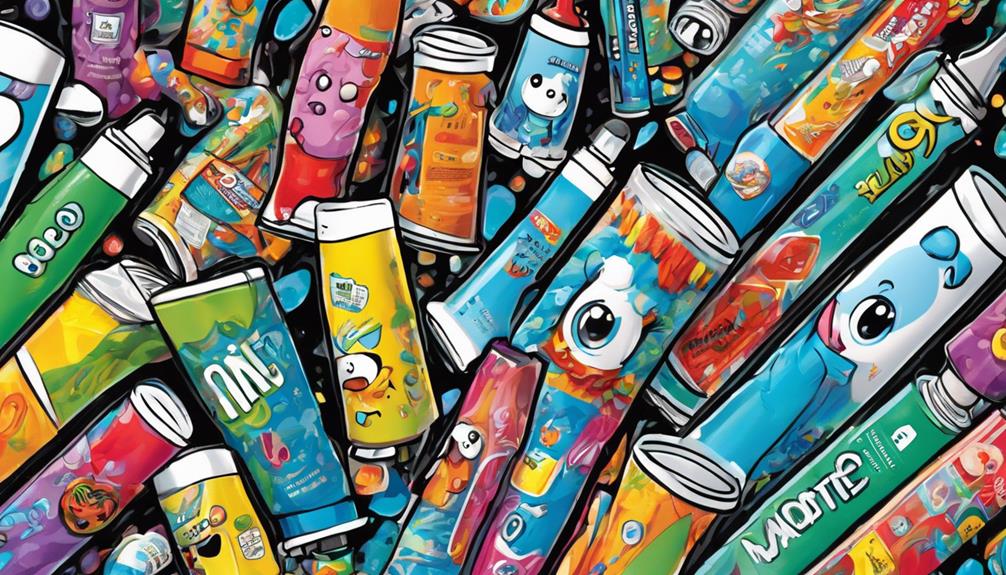
When choosing toothpaste for your child, it's important to critically evaluate the marketing claims made by various brands, especially those emphasizing 'toxin-free' or completely safe formulas. Many brands rely on fear-based tactics that can mislead you, as all substances are chemicals, including fluoride. Claims promoting 'safe' toothpaste can overshadow fluoride's proven benefits in cavity prevention, which pediatric dentistry recommends.
Here's a quick look at some common claims and their implications:
| Claim | Reality | Recommendation |
|---|---|---|
| Toxin-Free | Misleading; all substances are chemicals | Check for fluoride content |
| Completely Safe | Often ignores fluoride's benefits | Consult with a pediatric dentist |
| Natural Ingredients | Doesn't guarantee effectiveness | Look for ADA Seal of Acceptance |
Be cautious of brands like RiseWell and Theodent, which have faced criticism for spreading misinformation about fluoride safety. Understanding the actual fluoride content is vital; over-the-counter toothpaste typically contains 1,100 ppm, while prescription options can have up to 5,000 ppm. Transparency in ingredient sourcing is essential for making informed choices regarding your child's dental health.
Frequently Asked Questions
Why Not to Use Kids Toothpaste?
You shouldn't use kids' toothpaste if it lacks effective cavity-fighting ingredients or contains high sugar levels. Many options also have lower fluoride concentrations, which might not protect against dental decay for children at higher risk.
What Is the Difference Between Kids Toothpaste and Regular Toothpaste?
Kids' toothpaste has lower fluoride levels, fun flavors, and is often SLS-free, making it gentler on sensitive mouths. Regular toothpaste usually has stronger mint flavors and higher fluoride content, designed for adult dental needs.
What to Avoid in Children's Toothpaste?
When choosing children's toothpaste, avoid sodium lauryl sulfate, fluoride-free options, added sugars, harsh abrasives, and fear-based claims. These ingredients can harm your child's dental health instead of protecting it. Prioritize safe, effective formulas.
What Are the Side Effects of Fluoride Toothpaste for Kids?
Fluoride toothpaste can cause side effects like dental fluorosis if too much is ingested. Some kids might also experience tooth sensitivity or discomfort from certain formulations, especially those containing Sodium Lauryl Sulfate. Always supervise their brushing.
What Kind of Toothpaste is Safe for Kids to Use?
When it comes to mouthwash safety for kids, it’s important to choose a toothpaste that is formulated specifically for their young teeth and sensitive gums. Look for toothpaste with the American Dental Association seal of approval, as this ensures it meets safety and effectiveness standards for children.
Conclusion
In the battle for your child's dental health, choosing the right toothpaste is essential.
While fluoride fights cavities like a superhero, alternatives may appeal to the cautious parent.
Picture a shield against decay versus a gentle embrace for sensitive teeth—both have their place.
You want the best for your child, so weigh your options carefully.
Remember, what you squeeze from the tube can make all the difference in their bright, healthy smile.
Choose wisely!
